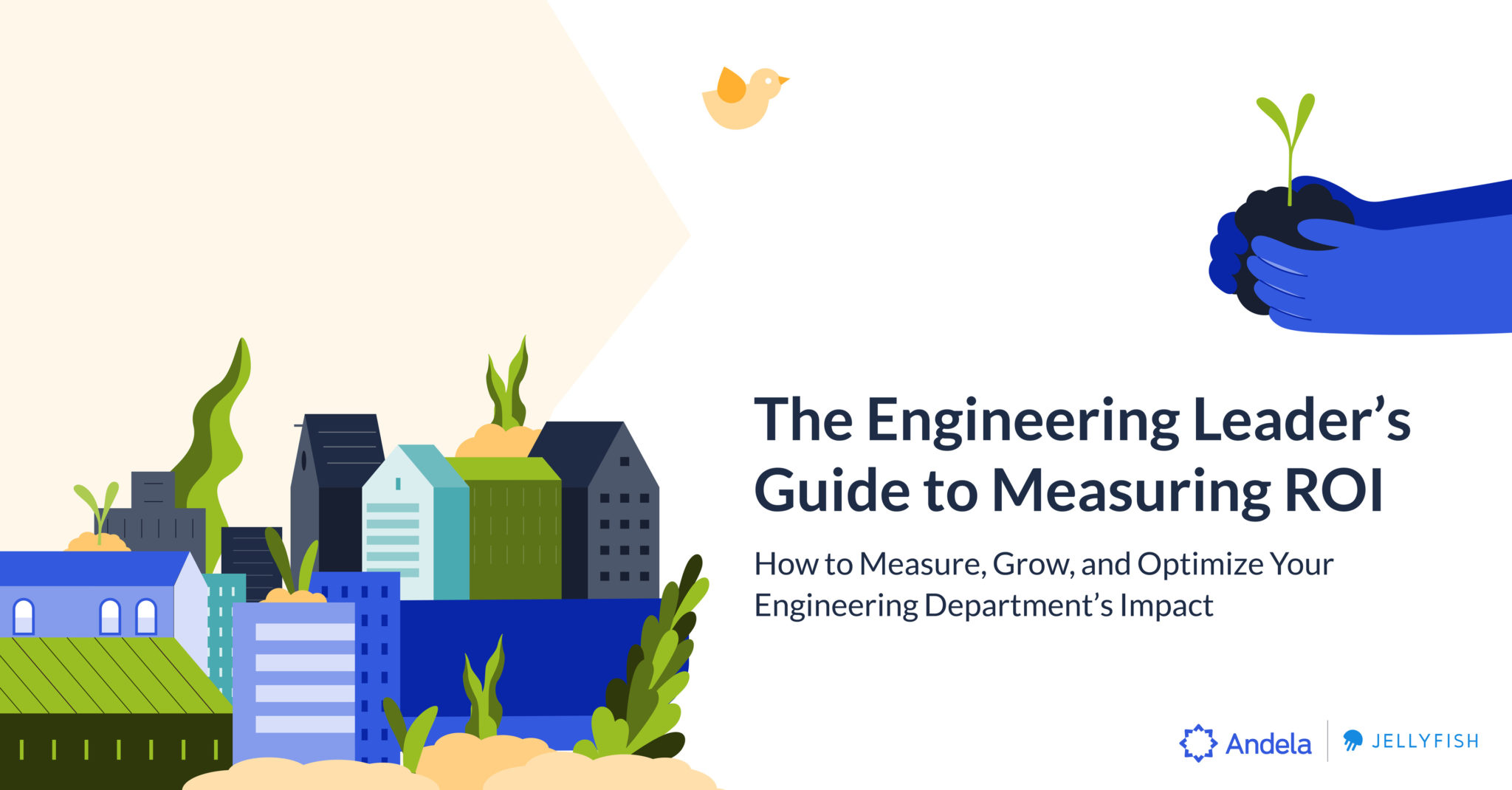The engineering organization is one of the most important resources that any company can invest in. But too often engineering leaders find themselves speaking to the costs of engineering and R&D; rarely on the impact, or returns from investing in it. As more companies are evolving into software companies, shouldn’t we also evolve the way that we and our companies talk about the impact of our software development teams?
We partnered with Andela, a leader in helping organizations build remote engineering teams, to discuss what that evolved form of measuring engineering impact should look like. The result of these discussions takes the form of a comprehensive guide that discusses how to adapt the return on investment (ROI) calculation to engineering organizations. We discuss common challenges teams might face trying to measure ROI, review how to overcome those challenges, and provide examples of ROI calculations in different industries. You can read our guide here, but before going into detail regarding how to measure ROI for engineering, it’s important to understand why engineering leaders should consider ROI as a tool in the first place.
Cost-benefit analysis is a shared responsibility
For some organizations, the responsibility of optimizing benefit over cost (and determining how benefit is defined) officially falls to the product organization, the executive team or sometimes even the CEO. But regardless of your specific situation, you and your business will benefit from measuring the total impact of your engineering teams.
Without your input into these benefit vs cost conversations, business leaders lack a complete picture of what should be prioritized and why. As an engineering leader, you have an important seat at the table during these conversations, and it’s important that these inputs and perspectives come straight from the source. With the ROI calculation, you can provide valuable information that can positively influence what becomes priority work and other strategic decisions.
Translate engineering value for the business
Unlike many metrics that engineering leaders measure, the other business leaders understand the concept of ROI. While DevOps, productivity, and quality metrics are insightful for engineering operational purposes, they are sometimes lost on many of your department peers (whether they’ll admit it or not). One of the underappreciated roles of the head of engineering is to translate strategy between the technical and non-technical sides of the business. ROI can be a critical tool to help translate engineering’s value into strategic business objectives. It can be the common ground for strategic decision making between these two very different perspectives.
Manage your team’s time more efficiently
Once you become an engineering leader, you’re responsible for helping ensure your team is making the best use of their time. It’s important to make sure that your team has the right tools and processes in place, but it’s equally important to ensure that the work being done is important to the business. Many engineering leaders are focused on process, but are less confident in how to solve prioritization challenges. It’s understandable; processes are tangible and measurable while prioritization exercises may seem completely subjective.
The ROI calculation is an attempt to make prioritization objective and data-driven. Being able to quantify your team’s activities in terms of their impact on desired outcomes becomes especially valuable when resources are scarce, as you simply cannot prioritize everything. You need data to inform and backup what needs to be deprioritized. With ROI you can put a value on past activity work to inform where your team’s time should be spent in the future.
ROI is becoming easier to measure over time
One of the common concerns regarding measuring ROI for engineering is that it will take too much time or effort to gather the data and inputs. The good news is that it’s getting easier each day with new advancements in Engineering Management Platforms. They significantly reduce the complexities of reporting the costs required for the ROI calculation. Beside calculating costs, there are still challenges that some businesses will face when calculating ROI, and that’s why we’ve partnered with Andela to provide guidance on how to tackle those that remain.







